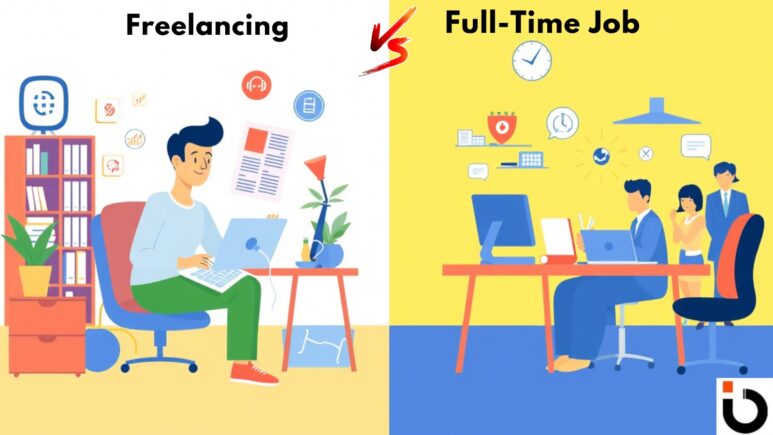Freelancing vs Full-Time Job: Which Is More Profitable in 2026?

Introduction
In 2025, the job market continues to evolve with the rise of the gig economy and remote work. Many professionals face a critical question: Is freelancing more profitable than a traditional full-time job? Both career paths have their own advantages and challenges when it comes to income, stability, and work-life balance.
This article explores the profitability of freelancing versus full-time employment in 2025, helping you decide which path suits your financial goals best.
Understanding Freelancing
Freelancers are self-employed individuals who offer services to multiple clients on a contract or project basis. They enjoy flexibility and control over their work but must manage their own taxes, benefits, and client acquisition.
Pros of Freelancing Income
- Potentially higher hourly rates
- Opportunity to scale income by taking on more clients
- Ability to specialize in niche markets and command premium fees
Cons of Freelancing Income
- Income can be irregular and unpredictable
- No employer-sponsored benefits like health insurance or retirement plans
- Time spent on non-billable tasks reduces profitability
Understanding Full-Time Employment
Full-time jobs typically provide a steady salary with additional benefits like health insurance, paid leave, and retirement contributions. This stability appeals to many workers seeking consistent income.
Pros of Full-Time Job Income
- Predictable monthly paycheck
- Access to employer-sponsored benefits
- Opportunities for raises and promotions
Cons of Full-Time Job Income
- Income growth can be limited by company policies
- Less flexibility in work hours and location
- Potential job insecurity due to layoffs or restructuring
Income Comparison: Freelancing vs Full-Time in 2025
| Factor | Freelancing | Full-Time Job |
|---|---|---|
| Income Potential | Variable; can be higher with skill and client base | Stable; typically capped by salary range |
| Benefits | Self-managed; no employer benefits | Health, retirement, paid leave |
| Job Security | Low; depends on client acquisition | Higher; contractual employment |
| Flexibility | High; set your own hours and workload | Limited; fixed schedules |
| Workload Management | Self-directed; may include admin tasks | Assigned by employer |
Key Considerations for Profitability
1. Industry and Skill Set
Certain fields like tech, design, and writing offer lucrative freelancing opportunities. In others, full-time employment may provide better financial stability.
2. Experience Level
Experienced freelancers can command premium rates, while entry-level freelancers might struggle to find consistent work.
3. Financial Discipline
Freelancers need strong financial planning to manage irregular income and save for taxes and retirement.
4. Market Demand in 2025
With increasing digitalization, demand for freelance services continues to grow, but competition also rises.
Tips to Maximize Earnings in Freelancing
- Build a diverse client portfolio
- Specialize in high-demand niches
- Use platforms like Upwork, Fiverr, or direct networking
- Continuously upgrade skills and certifications
Tips to Maximize Earnings in Full-Time Jobs
- Negotiate salary and benefits regularly
- Pursue professional development and certifications
- Take advantage of company bonuses and stock options
- Consider side hustles for extra income
Conclusion
Both freelancing and full-time employment can be profitable in 2025, but they suit different personalities, risk tolerances, and financial goals. Freelancing offers flexibility and potentially higher income but with income volatility. Full-time jobs provide stability and benefits but may limit earning potential.
Evaluate your industry, skills, and lifestyle preferences carefully to choose the path that will best help you achieve financial success.
SEO Keywords
- freelancing vs full-time income 2025
- is freelancing more profitable than full-time job
- career options gig economy 2025
- best jobs for freelancers
- full-time job benefits vs freelancing income

Visitor comments ( 0 )